India News
Crimes against women: The time for change is now
Just as the outrage over the gangrape and brutal murder of a 19-year-old woman in Uttar Pradesh’s Hathras district had begun to wane from popular attention, another case involving a 22-year-old woman has come to light in Kanpur Dehat district of the state on October 18.

By Sambhav Sharma and Priyanka Payal
Just as the outrage over the gangrape and brutal murder of a 19-year-old woman in Uttar Pradesh’s Hathras district had begun to wane from popular attention, another case involving a 22-year-old woman has come to light in Kanpur Dehat district of the state on October 18.
It may be a cliche to say the ever-increasing, and increasingly recurrent, rapes in the country has shaken it to its roots. After the 2012 Nirbhaya case, the laws to deal with crimes against women became more stringent. Less than a decade later, the realities and the surge in the number of crimes against women tell us stringent laws have not reduced the number of cases and the insensitivity towards women-related issues has only increased with time. Women continue to suffer due to deep-rooted prejudices that make them vulnerable to violence and discrimination in society. It would take much longer, like say Vision 2050, if one were to coin a slogan, and act to crack-down on such crimes. But what would happen to women’s security and safety from now to 2050 seems to be anybody’s guess.
The recently released National Crime Records Bureau report, made shocking revelations and threw light on how safe a woman is in India. A total of 4,05,861 cases of crime against women were registered during 2019, showing an increase of 7.3% over 2018 (3,78,236 cases). The majority of cases under crime against women under IPC were registered under cruelty by husband or his relatives (30.9%), followed by an assault on women with intent to outrage her modesty (21.8%), kidnapping; abduction of women (17.9%) and rape (7.9%). The crime rate registered per lakh women in the population is 62.4 in 2019 when compared to 58.8 in 2018, said the report.
The question is: Are laws to curb crimes against women a deterrent against rape? How will the number of cases of crimes against women come down?
Professor Shweta Prasad, department of sociology, Banaras Hindu University, said crimes against women happen because of patriarchal mentality where women’s body/ies are seen as a site of power struggle. While women still need to be empowered, they do not have the power to say what is right and what is wrong many times, she said. Women continue to be raped, especially marital rape, to silence them in the marital home, and take revenge from their family members, Prof Prasad said.
As regards rape as a societal evil, she said, there was a correlation in caste and gender, especially in the cases in Hathras and Budaun. Political parties have emphasised the caste identity to get political mileage, she said. The hierarchical structure is inherently violent in nature because of superior and subordinate mindset. Hence, the poor and the downtrodden are more vulnerable to such crimes, she added.
The way forward is in socialising children in a gender-neutral manner in India as the existent society had failed to give proper socialisation to children. It is the mentality which has to change and it should begin at the family level. Proper socialisation is the solution to all the problems, Prof Prasad said.
NGO SNEHA director Dr Nayreen Daruwala said that most cases of violence against women go unnoticed. “Violence is not a private matter. The Nirbhaya case got nationwide attention but what about the cases which fail to get media attention? The recognition of crimes against women is very low. Gender biases are Protest against the Hathras gangrape and death of the victim, at Jantar Mantar, in New Delhi big reason. We need to challenge the patriarchal nature of Indian society and education, socialisation is where we need to focus the most,” she said.

Speaking of the need to understand the psychopathology of rapists, she said societal sanctions could work as a deterrent but the system needs to be more sensitive towards crimes against women. “Criminals should feel the fear of the law but the law has its loopholes, they get bail,” Dr Daruwala said.
There need to be clear-cut protocols for police, judges that their socialisation would not impact the case. Attitude and behavioural changes is a long-term process but if we make certain protocols, those would lead to some change, she added.
Rekha Sharma, a former judge of Delhi High Court, said that time and again, it had been emphasised that a proper and sincere investigation of the crime was needed. In the recent Hathras case also, there had been so many lapses including the forensics to the post-mortem report, she said. It was also seen that the victim’s family wanted to bury the incident due to the social stigma attached to it, sometimes, the matter ends up at the panchayat level, she said.
The Union Home Ministry on October 10 issued a fresh advisory to states and union territories to follow in cases of crimes against women, especially listing mandatory police action. The ministry said there should be mandatory registration of an FIR in case of a cognisable offence under the Criminal Procedure Code, and if the crime is committed outside the jurisdiction of a police station, the law enables the police to register a Zero FIR.
Nirbhaya case lawyer Jitendra Kumar told APN that there was gross insensitivity involved in crimes against women. Before the case reaches the police station, the victims and their family face societal pressure as there is enormous social stigma associated with rape, irrespective of caste, creed, religion, region, which was one of the major reasons for non-reporting of the crime. People try to build social pressure on the victim’s family to marry off the victim to the rapist in the name of compromise, he added.
Now, if the matter reached the police station, the male dominance in the station lacks sensitivity about the crime. When the victims’ family reaches the police station, the so-called police justice system steps in, they talk of compromise or try to settle the matter with the accused person, Jitendra Kumar added.
When the report is converted into an FIR, the statement of the victim should be filed under Section 164 of the CrPC,which gives power to the metropolitan magistrate or the judicial magistrate to record confession and statements during the course of the investigation. But the police register statement under Section 164 CrPC very rarely, Kumar said.
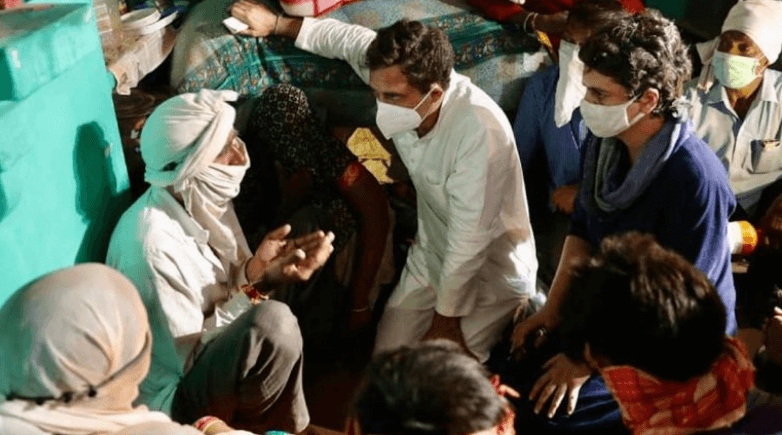
There’s no time-limit to file a chargesheet or to make an arrest with the entire discretion resting with the police. Within 90 days of the arrest of the first accused, the chargesheet is to be filed. This law favours the accused and not the victim, Kumar said. There was no defined process and lack of complete transparency, there were no checks, he said. Suggesting changes, Kumar said the statement should be taken in the presence of a third person/official. Moreover, the witness’ security was so weak that they are vulnerable to pressure from everyone. For this reason alone, most people don’t go to court to testify, he said.
If the matter comes to the limelight, the victim gets compensation but most cases go unreported. This was very subjective hence the laws needed to be amended, Kumar added.
Listing loopholes, like in the 2019 Hyderabad case where the four accused were encountered, he said police should not be given such powers to eliminate criminals. The criminals must and only be punished through prescribed law.
The way forward lies in the infusion of technology in the system like phone recording, tracking the investigative officer, putting certain checks and balances on police among others, Kumar said.
Kumar did add that there was another side to the story. With female-centric laws being made stringent, they were liable to be misused. In a rape case, on the basis of a mere statement of the woman, the man can be punished, he added.
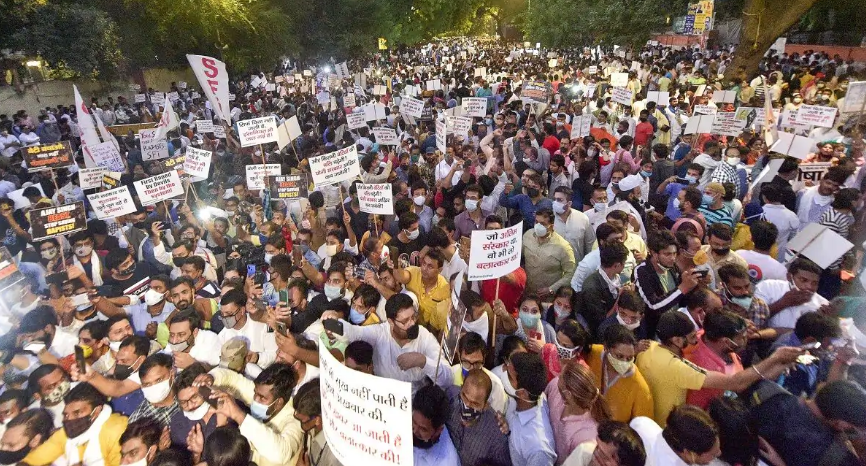
The police themselves work under incomprehensible pressure, are poorly paid, have generally tough living conditions and, worst of all, are usually beholden to corrupt and venal superiors. All of which make police reforms the top priority. But like the cliche of India shaken to its roots, police reform is a topic mouthed whenever there is a ghastly crime but forgotten quickly afterward.
In 2017, India had 131 police officers per 1,00,000 people; that is lower than the sanctioned number (181), and much lower than the number recommended by the United Nations (222). The Second Administrative Reforms Commission (ARC) has noted that this power has been misused, and ministers have used police forces for personal and political reasons. Hence, experts have recommended that the scope of the political executive’s power must be limited under law. In a country like India, police forces need to be well-equipped, in terms of personnel, weaponry, forensic technology, communication and transport support, to perform their role well.
Nirbhaya’s mother Asha Devi said the condition of law and order in the country was poor and the system needed reforms: from the grassroots level to the top. In rape cases when the victim is already facing mental trauma, the police behave insensitively when the victim reaches the police station, she said.
Most times, the FIR is filed much later after the crime is reported, and not immediately. Speaking about legal challenges, she said lawyers in lower courts are very insensitive in what they ask from the victim’s family. “We talk about fast-track court, but it took over seven years to get justice for Nirbhaya in a fast-track court. Justice needs to be done in a time-bound manner,” she added. Admitting that media scrutiny played a pivotal role in the process, Asha Devi wondered what happens to those cases which fail to get media attention.
Read Also: Crime against women: Centre advisory on mandatory action
Professor Rakesh Pandey, Psychology department, BHU, suggested psychological autopsy, psychological profiling of criminals to understand their state of mind in the hope that it could help track potential criminals ahead. He said there was a need for mass scale psychological education which is lacking in society now.
Curbing crimes against women is not just the responsibility of governments but is also society’s collective responsibility. This could start with reforms, change in the patriarchal mindset and other behavioural changes, which though look like long-term processes, would need definite short-term plans in place.
2024 Lok Sabha Elections
Lok Sabha election 2024: Nearly 50% voter turnout recorded in second phase till 3 pm
The constituencies going to polls today include all 20 Lok Sabha seats in Kerala, 14 in Karnataka, 13 in Rajasthan, and others spread across different states.
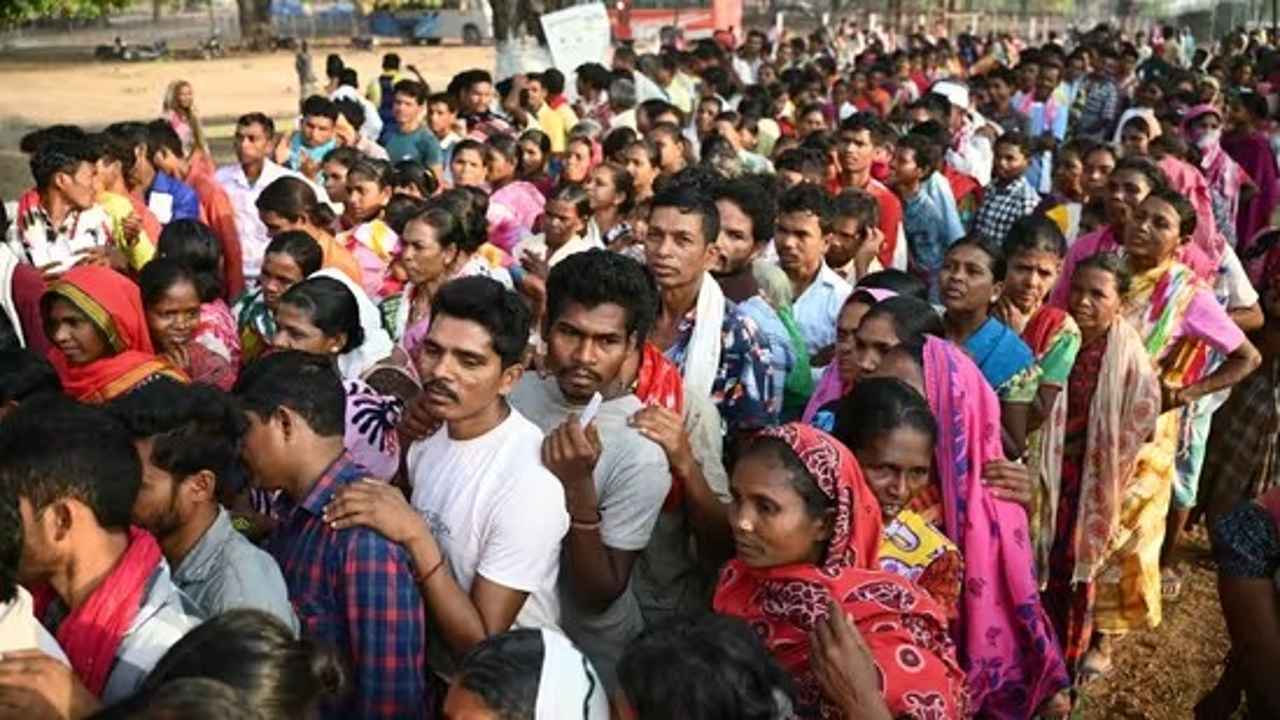
In the second phase of Lok Sabha elections 2024, over 50% of voters were registered in 13 states and the UTs till 3 p.m. 65% of voters participated in the first round of the Lok Sabha elections.
The 18th Lok Sabha elections are currently in their second phase, with voting for 88 seats taking place across 13 states and union territories. There are more than 1,200 people running for office, four of them are from outside Manipur.
Union minister Rajeev Chandrasekhar, BJP members Tejasvi Surya, Hema Malini, and Arun Govil, Rahul Gandhi and Congress leader Shashi Tharoor, DK Suresh, the brother of Karnataka Deputy Chief Minister DK Shivakumar, and former chief minister HD Kumaraswamy are among the notable contenders for the second phase.
In 2019, the NDA had won 56 of the 89 seats and the UPA 24. Six of these seats have been redrawn as part of the delimitation exercise.
The first phase of the seven stages of the elections took place on Friday, including 102 seats spread across 21 states and Union territories. Voter turnout was about 65.5% in the first phase, according to the reports.
In biggest festival of democracy, people from all walks of sector took part in it. A video went viral where former India captain and current Indian team head coach Rahul Dravid and former India player and head coach Anil Kumble were seen standing in line to cast their vote.
Meanwhile, voting started at 7 a.m. and will end at 6 p.m. The Election Commission has extended voting hours for those who are in line by an hour. According to Election Commission figures, the first two hours saw a 9.3% voter turnout throughout the 88 constituencies. By 9 am, Kerala had recorded 8.52%, Karnataka 9.21%, and Madhya Pradesh 13.82%.
In this phase, there were about 15.88 crore eligible voters, comprising 5.929 third-gender electors, 8.08 crore males, and 7.8 crore women. 3.28 crore young voters, aged 20 to 29, are among them; 34.8 lakh of them are first-time voters.
2024 Lok Sabha Elections
Lok Sabha elections 2024: 102-year-old man walks to polling booth to cast his vote in Jammu
The lowest voter turnout so far was noted in Ramgarh at 1.53%.
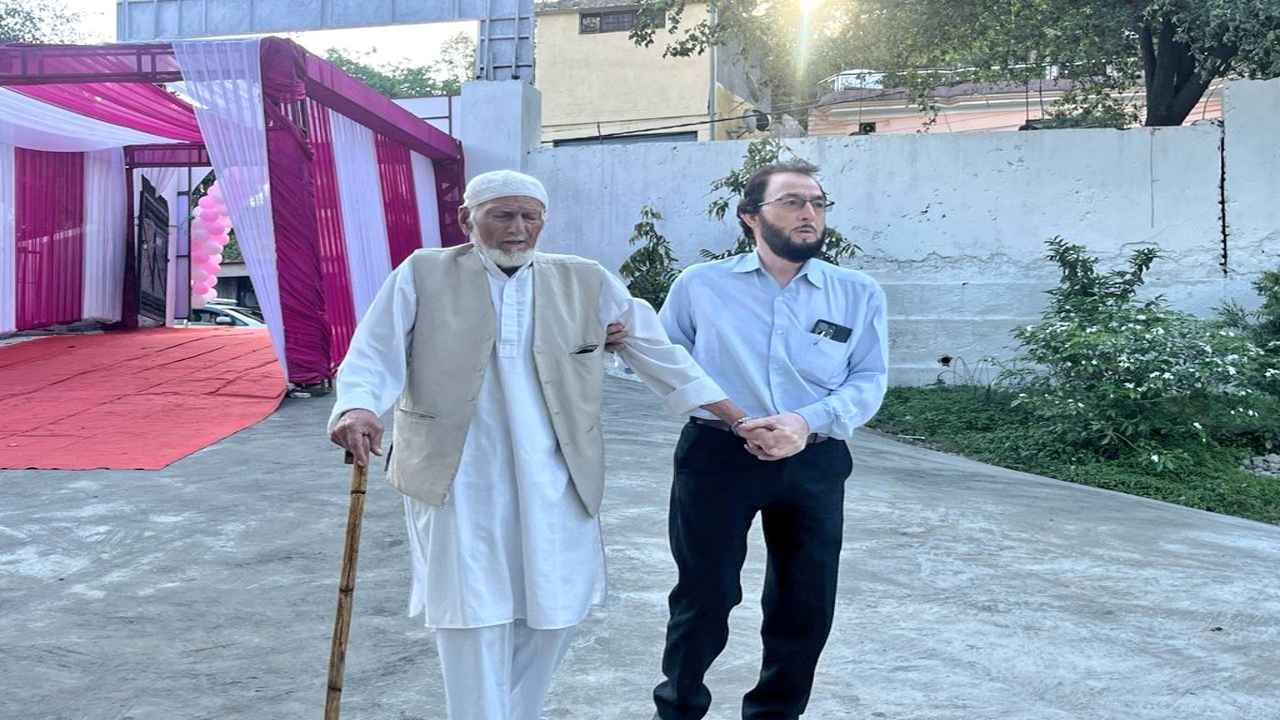
A 102-year-old man showed up at a Jammu polling place to cast his vote in the second phase of the Lok Sabha elections on Friday. Haji Karam Din arrived at the Reasi district polling place in the Jammu constituency with a walking stick in hand and a family member who assisted him with the pre-voting process.
Haji Karam Din, who is 102-year-old, showed his inked finger and posed for pictures outside the polling booth after casting his vote. He said voting at this polling place at this age makes him very happy. He has always cast his vote. Even at the age of 102, this experience is still ongoing, he said.
Reasi district is a part of the Jammu parliamentary constituency, and 22 candidates are up for vote with around 17.81 lakh eligible voters.
BJP’s sitting member Jugal Kishore Sharma is aiming for a third term in office following wins in the elections of 2014 and 2019. Former minister and Congress candidate Raman Bhalla is his main opponent.
Voting in the Jammu-Reasi Lok Sabha constituency began with eager voters showing up at the polling places. Some of them were wearing traditional Dogra attire.
In 2,416 polling places around the constituency, voting got underway at 7 a.m., and 10.39% of the total votes were cast by 9 a.m. In the 2019 Lok Sabha elections, Jammu recorded a 74% voter turnout.
Following the repeal of Article 370 and the division of the former state into two Union Territories five years ago, this is Jammu’s first significant election.
The Akhnoor segment received the highest percentage of votes, 14.24%, followed by Reasi (14.13%), Gulabgarh (13.53%), Shri Mata Vaishnodevi (12.71%), Marh (12.31%), Samba (8.56%), R S Pura Jammu South (8.17%), and Suchetgarh (5.67%), according to the officials. Ramgarh recorded the lowest voter participation of 1.53% so far.
Low attendance was observed in the border areas of the districts of Jammu and Samba till nine in the morning, according to poll data.
The officials said that big lines of voters were observed at several polling places throughout Jammu city. Voters were observed heading towards polling places early in the morning.
India News
Salman Khan house firing case: NIA interrogates arrested shooters Sagar Pal, Vicky Gupta for three hours
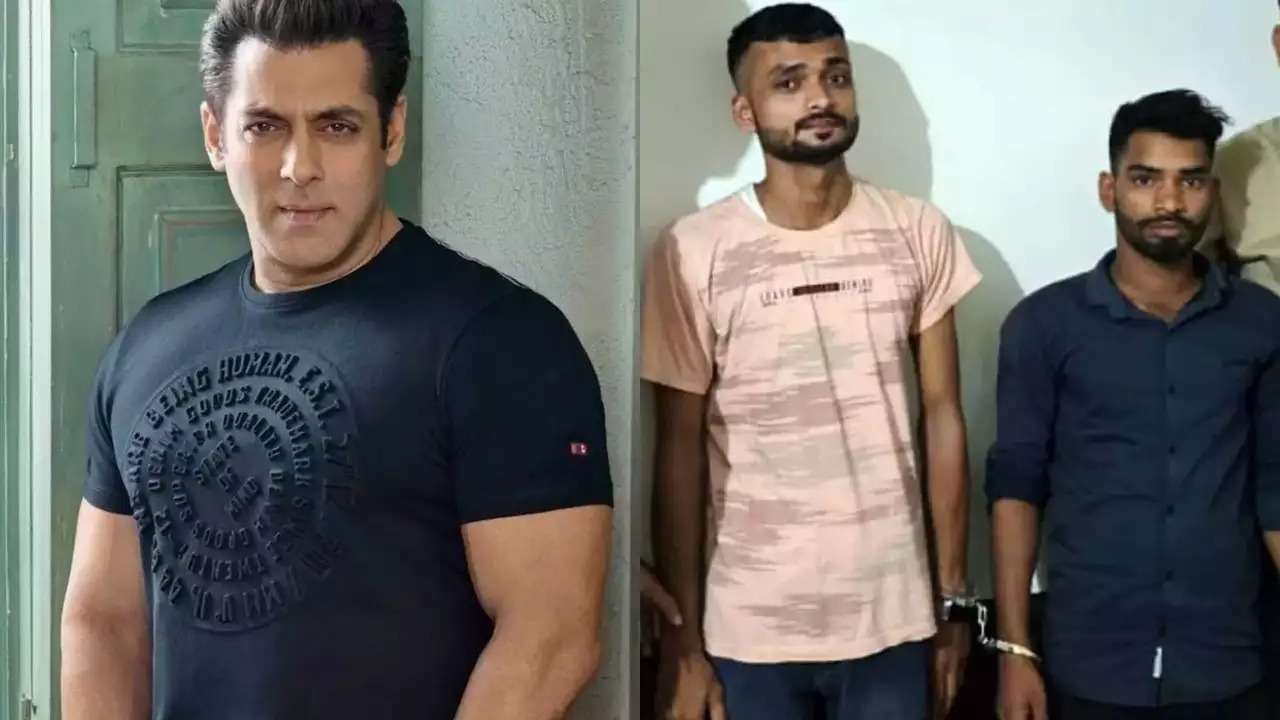
The investigation into the shocking firing incident that took place outside Salman Khan’s house on April 14 keeps bringing new updates with every passing day. In this case, Sagar Pal and Vicky Gupta, the two suspected shooters, have already been taken into custody.
The two shooters have reportedly been questioned by the National Investigation Agency (NIA), according to a new development. Every day that goes by, more information is revealed about the inquiry into the shocking firing incident that happened outside Salman Khan’s house on April 14. Sagar Pal and Vicky Gupta, the two accused shooters, are being held in custody after their first arrests.
It was recently discovered that the two shooters were questioned by the National Investigation Agency (NIA).
NIA has reportedly begun questioning Sagar Pal and Vicky Gupta, who were detained a few days ago for firing openly outside Salman Khan’s Galaxy Apartments in Mumbai, according to a recent update posted on their X (Twitter) account. NIA has interrogated shooters Vicky Gupta and Sagar Pal, arrested in the firing case, the tweet said.
According to the reports, two Punjabi residents were taken into custody by the Mumbai Crime Branch yesterday on suspicion of being involved in the recent shooting incident outside the house of Bollywood actor Salman Khan.
The two men, Sonu Subhash Chander and Anuj Thapan, provided guns to Sagar Pal and Vicky Gupta, the shooters, according to information released by the Mumbai Crime Branch. It was also reported that they had communication with the Bishnoi gang. For those who don’t know, hours after the incident, Anmol Bishnoi, the brother of gangster Lawrence Bishnoi, allegedly took credit for the firing in a Facebook post.
The shooters’ custody has been extended by Mumbai’s Esplanade Court until April 29.
Meanwhile, on the workfront Salman Khan was last seen in Tiger 3 alongside Katrina Kaif.
-
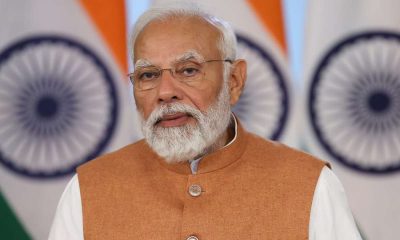
 2024 Lok Sabha Elections14 hours ago
2024 Lok Sabha Elections14 hours agoPM Modi calls for high voter turnout in second phase of Lok Sabha elections 2024, says your vote is your voice
-
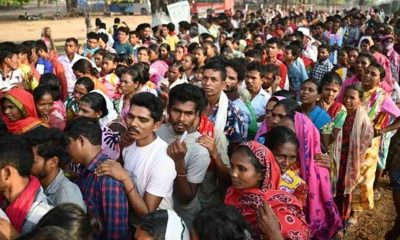
 2024 Lok Sabha Elections8 hours ago
2024 Lok Sabha Elections8 hours agoLok Sabha election 2024: Nearly 50% voter turnout recorded in second phase till 3 pm
-

 India News12 hours ago
India News12 hours agoSalman Khan house firing case: NIA interrogates arrested shooters Sagar Pal, Vicky Gupta for three hours
-
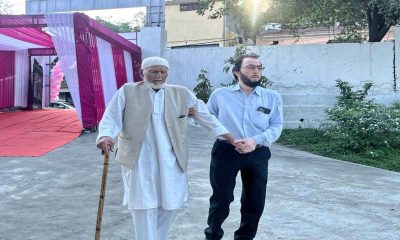
 2024 Lok Sabha Elections11 hours ago
2024 Lok Sabha Elections11 hours agoLok Sabha elections 2024: 102-year-old man walks to polling booth to cast his vote in Jammu
-

 2024 Lok Sabha Elections6 hours ago
2024 Lok Sabha Elections6 hours agoElection Commission books BJP MP Tejasvi Surya for seeking votes in the name of religion













